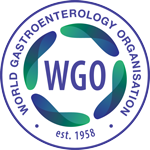IBD Mimickers in Tropical Countries
Vol. 26, Issue #3 (December 2021)
 |
Tanyaporn Chantarojanasiri, MD
Division of Gastroenterology and Hepatology
Department of Medicine
Rajavithi Hospital of Public Health College of Medicine, Rangsit
University, Bangkok, Thailand
|
 |
Quang Trung Tran, MD, MSc
Internal Medicine Department and Endoscopy Center
Hue University Hospital, Hue University, Vietnam
Internal Medicine A Department, Greifswald University Hospital,
Greifswald University, Germany |
The diagnosis of inflammatory bowel disease (IBD) in tropical countries is often interfered by intestinal infectious diseases such as tuberculosis and amoebiasis. Both IBD and these infections have overlapping clinical manifestations and endoscopic findings. The differentiation between these conditions is important since the treatment for IBD, especially steroid or the biologic agents, will aggravate the infection.
Tuberculosis (TB)
Intestinal tuberculosis comprised 10% of extrapulmonary tuberculosis, in which ileocecal areas are mostly involved.1 Gastrointestinal infection is the consequence of direct ingestion of the pathogen in the pulmonary secretion, hematogenous spreading, direct inoculation from the adjacent organ, or lymphatic spreading2 but co-existent pulmonary lesion was found only in 15-47% of patients.2, 3 TB usually appears as ulcerative or polypoid lesions (Figure 1) and the pathology showed granulomatous inflammation, which is difficult to distinguish from Ileocecal Crohn’s disease4 (Table 1, Figure 2A, 2B and 2C). The diagnosis of intestinal tuberculosis mainly depends on tissue diagnosis, in which the positive acid-fast bacilli could be identified in only 10%.3 When using tissue PCR for TB, the sensitivity increased to 47%, and specificity increased to 95%.5 The result could be improved using Xpert MTB/RIF assay in biopsy tissue with 32-33% sensitivity and 100% specificity.6, 7 When using the interferon-γ release assay, the sensitivity could be improved up to 86% with 93% specificity.3 The differentiation between these two diseases is important since most of the treatment for Crohn’s disease would aggravate tuberculosis. In the high prevalent areas, extensive screening for active or latent tuberculosis is warranted prior to the initiation or during biologics or immunosuppressive therapy. In case that active or latent TB were detected, treatment for TB should be considered for at least three weeks prior to the initiation of anti-TNF.8
Amoebiasis
Intestinal amoebiasis is an infectious disease caused by the protozoa Entamoeba histolytica. This protozoan is transmitted by ingestion of the cyst, and colitis occurs when trophozoite penetrates intestinal mucosa.9 The clinical presentation of patients with amoebic colitis included abdominal pain, fever, and watery or bloody diarrhea which can last for several weeks. In some cases, acute necrotizing colitis or perianal ulceration and fistula formation could be found.9 The endoscopic findings of amoebic colitis included discrete small ulcers less than 2 cm in diameter in the cecum or rectosigmoid, with intervening normal mucosa10 and ulcers with exudate. The combination of cecal lesions, multiple lesions, and exudates is highly suggestive for amoebic colitis.11 The diagnosis for amoebic colitis could be done based on the detection of E histolytica in the stool or antigen detection in the serology. However, stool examination lack specificity for the diagnosis of E histolytica against other nonpathogenic species, with only 50-60% sensitivity.12 The colonic biopsy specimen usually showed diffuse colitis in variable severity, but classical flask-shape lesion is rarely seen.9 The amoeba usually identified in the mucinous exudates and the trophozoite could be seen in 88% of the direct smear of intestinal washing.13 In cases that amoebiasis was misdiagnosed as IBD, life-threatening fulminant colitis after steroid administration was reported.12 Therefore, in endemic regions, various diagnoses to exclude amoebiasis should be made before the treatment of IBD.
Strongyloidiasis
Strongyloidiasis is the infection caused by Strongyloides stercoralis. This parasite is soil-transmitted and infested by penetrating the intact skin of the host. Gastrointestinal manifestation of strongyloidiasis included abdominal pain, diarrhea, protein-losing enteropathy, or constipation.14 Endoscopic findings of gastroduodenal involvement showed mucosal edema and erythema, while colonoscopy might show mucosa with loss of vascular pattern, edema, aphthous ulcers, erosions, serpiginous ulcerations, and xanthoma-like lesions.15 The histology specimen showed edema of lamina propria with infiltration with lymphocyte, plasma cells, and eosinophils, which might overlap with IBD.16 The definite diagnosis of this condition is the identification of Strongyloides larvae in the specimen. Misdiagnosis of strongyloidiasis as IBD can result in devastated outcome since the use of corticosteroid may lead to life-threatening strongyloidiasis hyper-infection syndrome.17 As a result, in any guideline, screening, or empirical treatment using ivermectin in patients who need corticosteroid is recommended.18
In summary, there are several infectious diseases that can mimic IBD. The differential diagnosis between intestinal TB and colonic Crohn’s disease depends on clinical findings and endoscopic tissue testing. Amoebic colitis could present with inflammation and ulceration, but the identification could be made by pathological findings and direct smear. Patients with strongyloidiasis might have similar clinical and endoscopic manifestation as IBD, but the diagnosis can be made bases on histological examination. In the particular cases which IBD and its infectious mimickers are not distinguishable, especially with atypical manifestation, therapeutic trial with anti-infection regimens prior to the immunosuppressive therapy seems to be a safer approach.
1. Rathi P, Gambhire P. Abdominal Tuberculosis. J Assoc Physicians India. 2016;64(2):38-47.
2. Debi U, Ravisankar V, Prasad KK, Sinha SK, Sharma AK. Abdominal tuberculosis of the gastrointestinal tract: revisited. World J Gastroenterol. 2014;20(40):14831-14840.
3. Lei Y, Yi FM, Zhao J, Luckheeram RV, Huang S, Chen M, et al. Utility of in vitro interferon-gamma release assay in differential diagnosis between intestinal tuberculosis and Crohn's disease. J Dig Dis. 2013;14(2):68-75.
4. Li X, Liu X, Zou Y, Ouyang C, Wu X, Zhou M, et al. Predictors of clinical and endoscopic findings in differentiating Crohn's disease from intestinal tuberculosis. Dig Dis Sci. 2011;56(1):188-196.
5. Jin T, Fei B, Zhang Y, He X. The diagnostic value of polymerase chain reaction for Mycobacterium tuberculosis to distinguish intestinal tuberculosis from crohn's disease: A meta-analysis. Saudi J Gastroenterol. 2017;23(1):3-10.
6. Fei B, Zhou L, Zhang Y, Luo L, Chen Y. Application value of tissue tuberculosis antigen combined with Xpert MTB/RIF detection in differential diagnoses of intestinal tuberculosis and Crohn's disease. BMC Infect Dis. 2021;21(1):498.
7. Bellam BL, Mandavdhare HS, Sharma K, Shukla S, Soni H, Kumar MP, et al. Utility of tissue Xpert-Mtb/Rif for the diagnosis of intestinal tuberculosis in patients with ileocolonic ulcers. Ther Adv Infect Dis. 2019;6:2049936119863939.
8. Park DI, Hisamatsu T, Chen M, Ng SC, Ooi CJ, Wei SC, et al. Asian Organization for Crohn's and Colitis and Asia Pacific Association of Gastroenterology consensus on tuberculosis infection in patients with inflammatory bowel disease receiving anti-tumor necrosis factor treatment. Part 2: Management. J Gastroenterol Hepatol. 2018;33(1):30-36.
9. Haque R, Huston CD, Hughes M, Houpt E, Petri WA, Jr. Amebiasis. N Engl J Med. 2003;348(16):1565-1573.
10. Singh R, Balekuduru A, Simon EG, Alexander M, Pulimood A. The differentiation of amebic colitis from inflammatory bowel disease on endoscopic mucosal biopsies. Indian J Pathol Microbiol. 2015;58(4):427-432.
11. Nagata N, Shimbo T, Akiyama J, Nakashima R, Niikura R, Nishimura S, et al. Predictive value of endoscopic findings in the diagnosis of active intestinal amebiasis. Endoscopy. 2012;44(4):425-428.
12. Shirley DA, Moonah S. Fulminant Amebic Colitis after Corticosteroid Therapy: A Systematic Review. PLoS Negl Trop Dis. 2016;10(7):e0004879.
13. Prathap K, Gilman R. The histopathology of acute intestinal amebiasis. A rectal biopsy study. Am J Pathol. 1970;60(2):229-246.
14. Nutman TB. Human infection with Strongyloides stercoralis and other related Strongyloides species. Parasitology. 2017;144(3):263-273.
15. Thompson BF, Fry LaC, Wells CD, Olmos Mn, Lee DH, Lazenby AJ, et al. The spectrum of GI strongyloidiasis: an endoscopic-pathologic study. Gastrointestinal Endoscopy. 2004;59(7):906-910.
16. Poveda J, El-Sharkawy F, Arosemena LR, Garcia-Buitrago MT, Rojas CP. Strongyloides Colitis as a Harmful Mimicker of Inflammatory Bowel Disease. Case Rep Pathol. 2017;2017:2560719.
17. Fardet L, Genereau T, Cabane J, Kettaneh A. Severe strongyloidiasis in corticosteroid-treated patients. Clin Microbiol Infect. 2006;12(10):945-947.
18. Stauffer WM, Alpern JD, Walker PF. COVID-19 and Dexamethasone: A Potential Strategy to Avoid Steroid-Related Strongyloides Hyperinfection. JAMA. 2020;324(7):623-624.
19. Limsrivilai J, Shreiner AB, Pongpaibul A, Laohapand C, Boonanuwat R, Pausawasdi N, et al. Meta-Analytic Bayesian Model For Differentiating Intestinal Tuberculosis from Crohn's Disease. Am J Gastroenterol. 2017;112(3):415-427.
20. Zhao XS, Wang ZT, Wu ZY, Yin QH, Zhong J, Miao F, et al. Differentiation of Crohn's disease from intestinal tuberculosis by clinical and CT enterographic models. Inflamm Bowel Dis. 2014;20(5):916-925.
Table 1 Features suggestive of ileocecal Crohn’s disease or tuberculosis 4, 19, 20
|
|
Crohn’s disease
|
Tuberculosis
|
|
Clinical feature
|
male gender
hematochezia
perianal disease
intestinal obstruction
extraintestinal manifestations
|
fever
night sweats
lung involvement
ascites
|
|
Endoscopic feature
|
longitudinal ulcers
cobblestone appearance
luminal stricture
mucosal bridge
rectal involvement
perianal disease
|
transverse ulcers
rodent-like ulcers
patulous ileocecal valve
cecal involvement
|
|
Pathology
|
focally enhanced colitis
|
confluent submucosal granulomas
lymphocyte cuffing
ulcers lined by histiocytes
|
|
Cross-sectional imaging
|
asymmetrical wall thickening
left sided colonic involvement
intestinal wall stratification
comb sign
fibrofatty proliferation
abscess
|
short segmental involvement
lymph nodes along right colic artery
lymph nodes with central necrosis
contracture of ileocecal valve fixed patulous ileocecal valve
|



